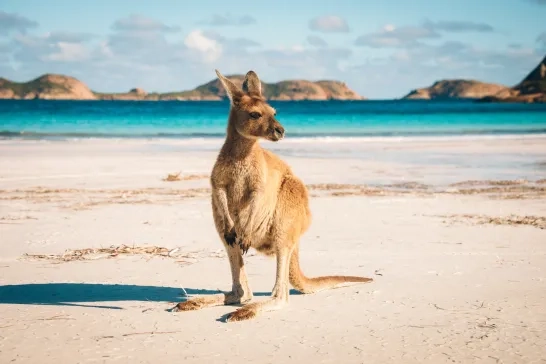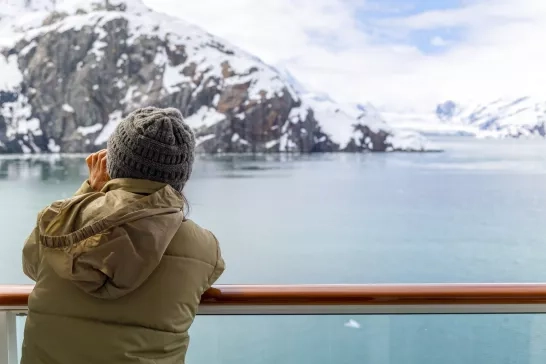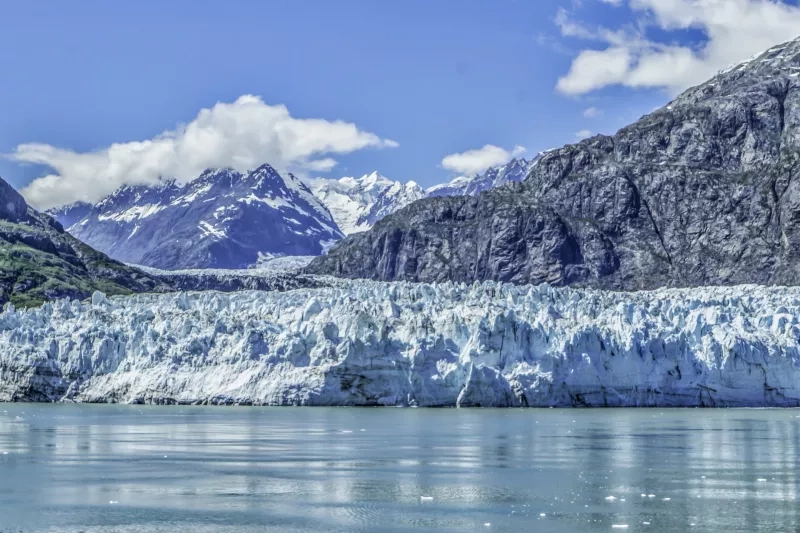
12 Questions Park Rangers get asked all the time about Glacier Bay
4 Minute Read
Glacier Bay National Park spans over 13,000 square kilometres of towering glaciers, mountain ranges, fjords and rainforests. It’s home to remarkable wildlife and a sought-after destination for travellers looking to sail the Inside Passage of Alaska.
Along with Kluane, Wrangell-St. Elias and Tatshenshini-Alsek Parks, Glacier Bay was established as a World Heritage Site in 1978. Combined, these parks that border Canada and the United States boast the largest non-polar icefields in the world.
Are you curious to know more about this majestic setting? Here are 12 common questions travellers ask Park Rangers about Glacier Bay.
Why does glacier ice look so blue?
If you’ve ever seen a photo or video of a glacier, you probably thought the bright blue colour resulted from post-production editing. But glacier ice really is that colour. It happens when light hits highly compacted ice. Reds, which are long-wavelength colours, are absorbed. What’s reflected to the human eye are short-wavelength colours – blue.
How many glaciers are in Glacier Bay National Park
Glacier Bay National Park And Preserve is free and accessible to all visitors if they visit by ship or boat, but travellers cannot drive to the location. During peak travel season in the summer, the National Park Service limits the number of cruise ships allowed in to only two. Not only does this help protect the park's resources, but it also guarantees a quiet and serene experience for travellers to experience and appreciate the park.
Does Glacier Bay freeze over during the winter?
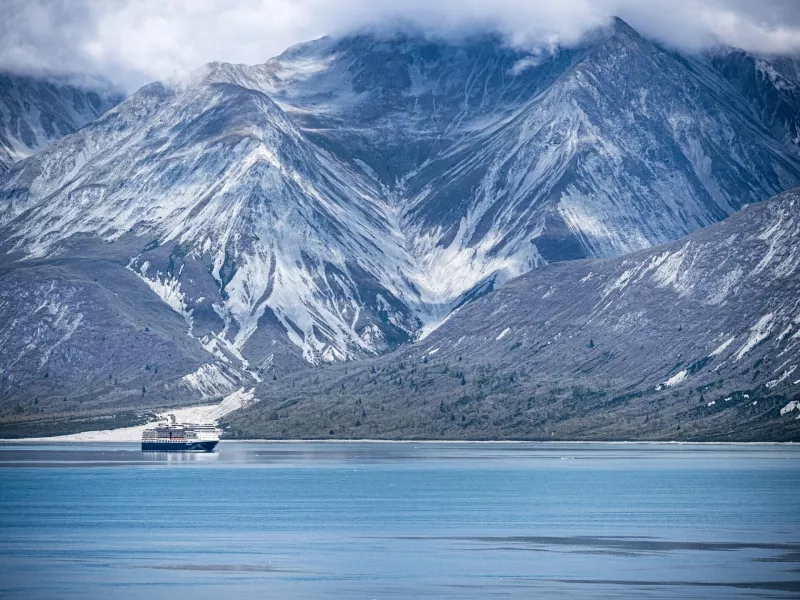
Elsewhere in Alaska, you might find bays and lakes freezing over, but not in Glacier Bay. Moderate temperatures, wind, and tidal fluctuations keep the teal bay water flowing throughout winter.
Can anyone visit Glacier Bay by ship or boat?
Glacier Bay National Park And Preserve is free and accessible to all visitors if they visit by ship or boat, but travellers cannot drive to the location. During peak travel season in the summer, the National Park Service limits the number of cruise ships allowed into Glacier Bay to only two. Not only does this help protect the park’s resources, but it also guarantees a quiet and serene experience for travellers to experience and appreciate the park.
Travel Tip: if visiting Glacier Bay is on your book-it list, work with a CAA Travel Consultant to find the right time of year and cruise line to take you there. Holland America Line, a preferred partner of CAA, has more sailings to Glacier Bay than any other cruise line.
Why are some glaciers dirty?
Not all glaciers are clear blue ice. Some glaciers have accumulated rocks and debris on their surface thanks to years of avalanches, rockslides, and melting ice.
How deep is Glacier Bay?
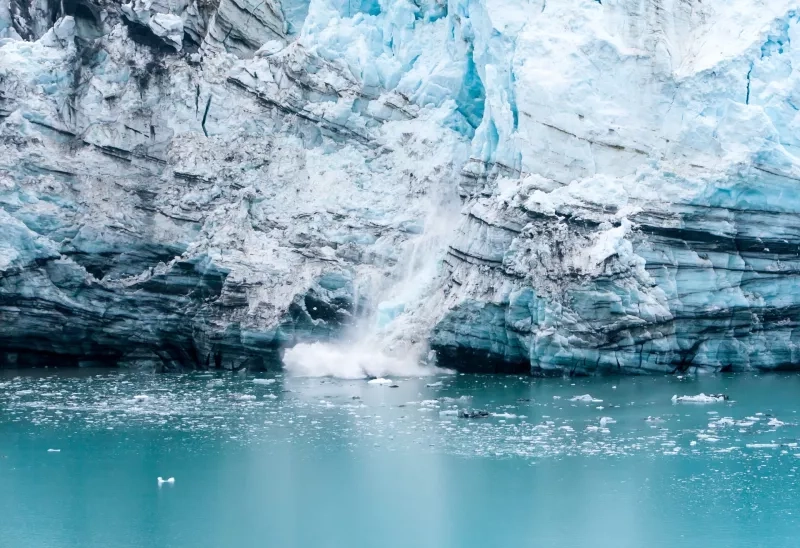
Mary Swift | iStock
If you were to swim to the bottom, you'd have to swim over 1,000 feet! The bay was carved out by glaciers, leaving a saltwater pool as the glaciers retreated. It's extremely deep and home to many wildlife, including Bald Eagles, seals, and whales.
What does calving mean?
While sailing in Glacier Bay, you might hear a thunderous crack followed by a splash in the water. When a piece of ice breaks off from the glacier and falls into the water, it's called calving.
What are the chances of seeing a glacier calve during your visit?
There's a good chance travellers will see calving during their trip to Glacier Bay. During a 24-hour period, some of these glaciers will move up to five feet. This movement makes the glacier terminus unstable and can cause calving. Keep a watchful eye on the glacier's face and listen for sounds of ice breaking to spot this incredible phenomenon.
What's the weather like in Glacier Bay?
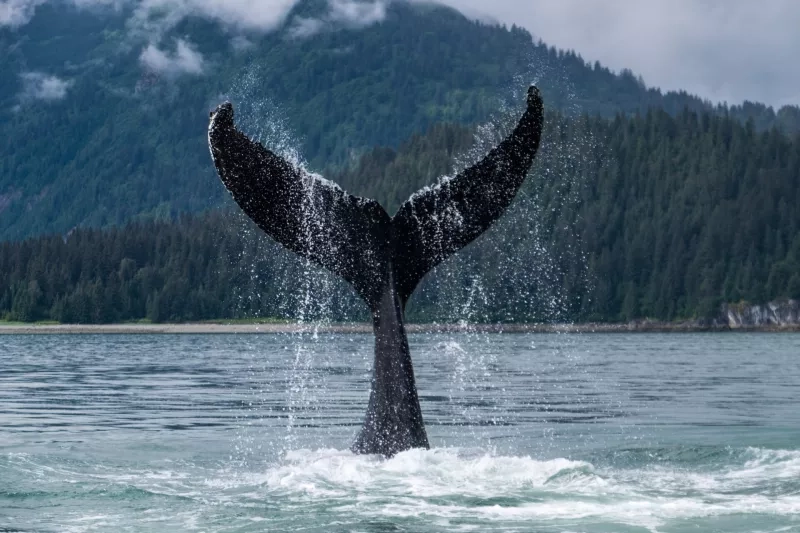
StefaniePayne | iStock
During summer, travellers will experience average highs of 10 to 15 degrees Celsius. Meanwhile, Glacier Bay's average daily temperature in winter is -2 to 5 degrees Celsius. Weather can be unpredictable sometimes, so it's a good idea to pack for rain or shine. April to June are usually the driest months to visit Glacier Bay, while September and October will be the wettest.
Can you find whales in Glacier Bay?
Some travellers will have the incredible experience of spotting a Humpback whale while sailing into Glacier Bay. They're most often found close to shore in the lower section of the park. Keep an eye out for whale spouts (blasts of water that hang in the air) on the horizon, and bring a pair of binoculars or a camera with a zoom lens to find them more easily.
How is climate change affecting glaciers in Alaska?
There are over 100,000 glaciers in Alaska, and roughly 95% are thinning, partly due to rising global temperatures. Since the 1950s, glacier ice in Glacier Bay has decreased by 11%. National Park Service scientists are closely watching Alaska’s shrinking glaciers and measuring how these walls of ice impact the land, water, and ecosystems.
Travel Tip: Travel responsibly when visiting Glacier Bay National Park & Preserve. Be mindful of loose clothing and hats to avoid items blowing overboard, and do not feed or disturb wildlife. Along with other guests, we can help preserve the beauty of Glacier Bay together.
Are all glaciers receding and getting smaller?
Climate change and warming temperatures will continue to alter the Alaskan landscape for years, but not all glaciers in the park are shrinking. Johns Hopkins Glacier is over one kilometre wide, over 360 kilometres tall, and is a tidewater glacier advancing further into the sea. On some Alaskan cruises, travellers will come face to face with this enormous sheet of ice.
Have more questions about visiting Glacier Bay?
You can book an appointment or call 1-800-705-1803 to speak with a CAA Travel Consultant about cruising to Alaska and Glacier Bay. Or, if you’re ready to start planning your trip, ask about your CAA Member Benefit with our preferred partner, Holland America Line.


